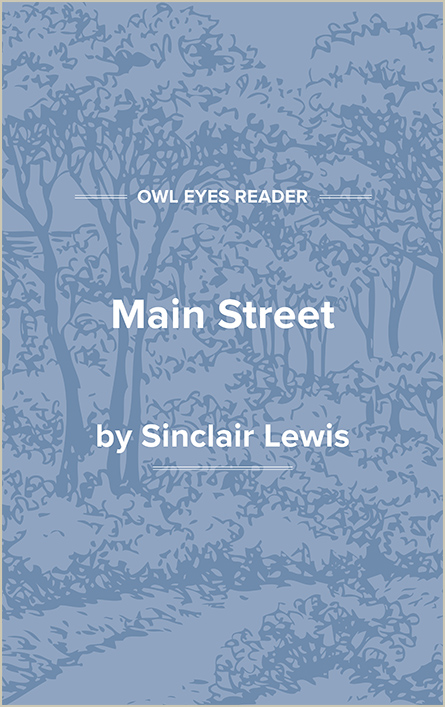Study Guide
Analysis Pages
Sinclair Lewis Biography
The literary decade of the 1920’s was dominated by two figures: H. L. Mencken and Sinclair Lewis, who, more than any other writers, gave to that era of “debunking” its special tone. Harry Sinclair Lewis was born in Sauk Centre, Minnesota (fictionalized by Lewis as “Gopher Prairie”), on February 7, 1885, the third son of Dr. Emmet J. Lewis, who furnished him with part of the character of Arrowsmith. Lewis attended Sauk Centre public schools from 1890 to 1902. (In 1898, he left home to enlist as a drummer boy in the Spanish-American War, but his father apprehended him.) From 1901 to 1903, he held odd jobs as typesetter and minor newswriter for two Sauk Centre newspapers, the Herald and Avalanche. He spent the 1902-1903 school year at Oberlin Academy (Ohio) preparing for Yale University, which he entered in 1903. He edited the Yale Literary Magazine and wrote for the school paper, the Courant. He also worked part-time at the New Haven Journal-Courier. Lewis left Yale in 1906 and spent two months as a man-of-all-work at Helicon Hall, Upton Sinclair’s utopian community at Englewood, New Jersey. From late 1906 to 1907, he spent a year living in New York City before traveling to Panama to seek work (unsuccessfully) on building the canal. He then returned to Yale. After graduating from Yale in 1908, Lewis spent many years at all sorts of work, mainly journalism, wandering from California to the East Coast. His first marriage, to Grace Hegger in 1914, ended in divorce in 1925; in 1928, he married the famous newspaper correspondent Dorothy Thompson, from whom he was divorced in 1942.
Lewis, after a period of purely conventional apprenticeship, found his true expression and for a decade produced a series of extremely important novels, only to relapse for the rest of his career into work of no lasting significance. Thus, his earlier and later novels can be disregarded. It was in five books written during the 1920’s that he said what he had to say.
Before 1920, Lewis had published five novels, all insignificant; then, according to legend, he announced that he was at last going to write a book to please himself. The result was Main Street, which had an immediate and enormous success following its unheralded publication in 1920. Using the knowledge gained during his youth in a typical small town, Lewis shattered forever the sentimental tradition clinging to American village life. Though he located Gopher Prairie in the part of the country that he knew best, Lewis made it clear that his story would have been much the same in any small town in the United States: They are all alike, he implied, in their pettiness, dreariness, and dullness, victims of the “village virus” that destroys initiative and makes the complacent inhabitants intolerant of values other than their own. For such people, Gopher Prairie is the ultimate triumph of civilization.
In Babbitt, his most successfully executed novel, Lewis undertook a more representative theme: the character of the typical businessman, the “go-getter” with his materialistic standards. He is hypnotized by his own slogans of success yet gnawingly aware that his life is somehow empty. Babbitt’s tragicomic revolt is short-lived, but it symbolizes the failure of American middle-class life to bring any real satisfaction to these people who are materially so successful and comfortable.
Arrowsmith did not infuriate so many readers, since its satire of commercialized science did not touch as many individuals and it contained the sympathetic character of Leora, the hero’s first wife. It is a competent novel, with some memorable figures, but it is more limited than the other books Lewis wrote during this period. Yet it was probably his most popular novel and the one for which he was offered the Pulitzer Prize in 1926. He refused the prize.
The next novel, Elmer Gantry , was Lewis’s most slashing attack on any segment of American life, and it was this book that angered the greatest number of people....
(The entire page is 1,126 words.)
Owl Eyes subscribers get unlimited access to our expert annotations, analyses, and study guides on your favorite texts. Master the classics for less than $5/month!

